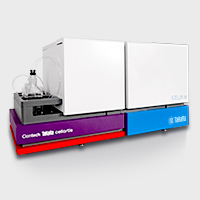Recent studies have demonstrated high variability in cell cycle and gene expression in cells with identical morphology, indicating that even "homogeneous" cells—such as those within the same tissue or culture vessel—can exhibit transcriptomic heterogeneity. One example of this is induced pluripotent stem cells (iPSCs): when tissue-specific differentiation is initiated, cells do not uniformly transition; rather, the differentiation rate varies from cell to cell. By analyzing single cells, it is possible to capture gene expression changes that would otherwise be masked in bulk analyses and gain a clearer picture of the differentiation process.
To address this challenge, Drs. Akira Watanabe and Yoshinori Yoshida at Kyoto University's iPS Cell Research Institute leveraged our open, flexible ICELL8 Single-Cell System to develop a method for transcriptomically characterizing the differentiation of human iPSCs into cardiomyocytes.







